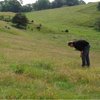
The municipalities have a new method for registering nature-related data. The method provides firm guidelines for registering data, so that case management and nature planning can be done on a uniform basis. The method is very flexible and can be adapted to the requirements of the municipalities in relation to each area. Read more about the municipalities’ nature quality planning (in Danish) at the Ministry for Environment and Food of Denmark’s website. The system includes
This is a brief introduction to the method. Brief guidelines with useful tips for open wood habitats, water holes and forests can be seen here:
On the right side of the page you can find a more detailed technical guide and field charts.
In short, you must
In order to apply the method in the field, a field chart and the latest aerial view of the area are required. All natural areas under §3 of the Nature Protection Act can be inspected using this method. There are specific field charts for each §3-type. It is optional how much information you gather, but you should choose a basic registration and perhaps apply extended registration in areas where you want better biological documentation.

Basic registration includes a delineation of the area, identifying the main habitat and possibly subtypes, and registering the structural indicators on the front page of the field chart. On the back of the field chart, it is possible to add important species from the area. The basic registration typically takes 15-35 minutes per area, depending on its size, accessibility and uniformity.

Extended registration also includes systematic registration of plant species within a documentation field (a circle with a 5 m radius), in which all vascular plant species are registered, both flowering and vegetative. Extended registration takes an additional 15-45 minutes per area, depending on species diversity. Extended registration allows calculating a species index, describing the current best biological condition of the area.